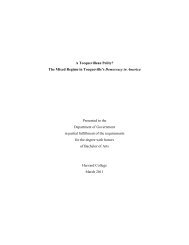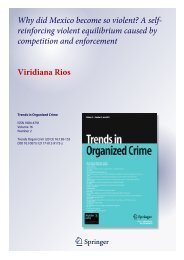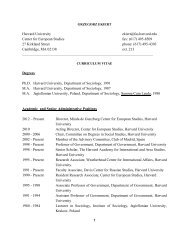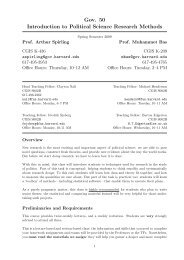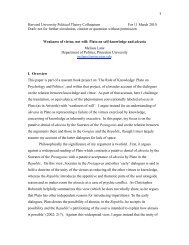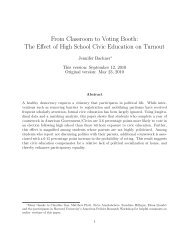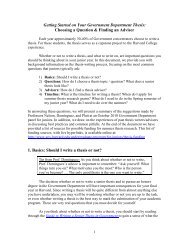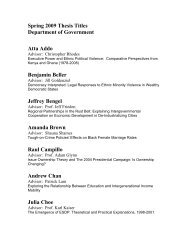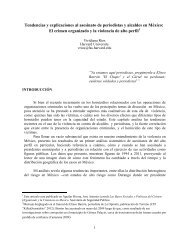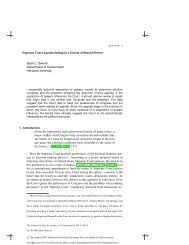Security issues and immigration flows: Drug-violence refugees, the ...
Security issues and immigration flows: Drug-violence refugees, the ...
Security issues and immigration flows: Drug-violence refugees, the ...
You also want an ePaper? Increase the reach of your titles
YUMPU automatically turns print PDFs into web optimized ePapers that Google loves.
tivities related to organized crime such as kidnappings <strong>and</strong> extortions. A second section<br />
explores migration <strong>flows</strong> at <strong>the</strong> border <strong>and</strong> within Mexico, <strong>and</strong> shows why Mexicans living<br />
at border towns seem to be particularly sensitive towards migrating. The third <strong>and</strong><br />
fourth sections show my statistical specifications <strong>and</strong> results. I estimate that a total of<br />
264,693 Mexicans have changed residency in direct response to drug-related homicides. A<br />
fifth section provides qualitative evidence of migration <strong>flows</strong> driven by security concerns,<br />
ra<strong>the</strong>r than by economic hardship, <strong>and</strong> describes some particularly interesting cases that<br />
support my quantitative findings.<br />
Mexico’s drug-related <strong>violence</strong><br />
“Fear has become part of our lives () There’s panic. We<br />
don’t know when <strong>the</strong> shooting is going to break out”<br />
—Tijuana citizen 1<br />
Mexico’s homicide rates have increased every year since 2004 –particularly sharply<br />
since 2008– as a result of increases in territorial fights between drug cartels. From December<br />
of 2006 to 2010, 34,550 killings have been officially linked to organized crime, a<br />
dramatic increase from previous years (2000 2006) when only 8,901 killings were linked to<br />
organized crime. The major increase <strong>violence</strong> spike of 2008 came when drug-related homicides<br />
jumped from 2,826 to 6,837 killings, a 142% increase with respect to <strong>the</strong> previous<br />
year. After ano<strong>the</strong>r increase of more than 40%, homicides reached 9,614 victims in 2009,<br />
<strong>and</strong> <strong>the</strong> record figure of 15,273 by 2010. In this last year, organized crime was officially<br />
responsible for 47% of all intended homicides happening in Mexico (Rios <strong>and</strong> Shirk, 2011).<br />
Mexico’s security <strong>issues</strong> are particularly acute at <strong>the</strong> border. Most drug-related<br />
homicides concentrate at border cities because US-Mexico crossing points are where <strong>the</strong><br />
1 Lacey (2008); Tijuana is a border town located south of San Diego, CA; during 2008, it saw 614 drugrelated<br />
homicides, a rate of about 43.72 per 100,000 inhabitants — quite larger than not-drug-related<br />
homicides, which cause only 20.46 casualties per 100,0000.<br />
4



